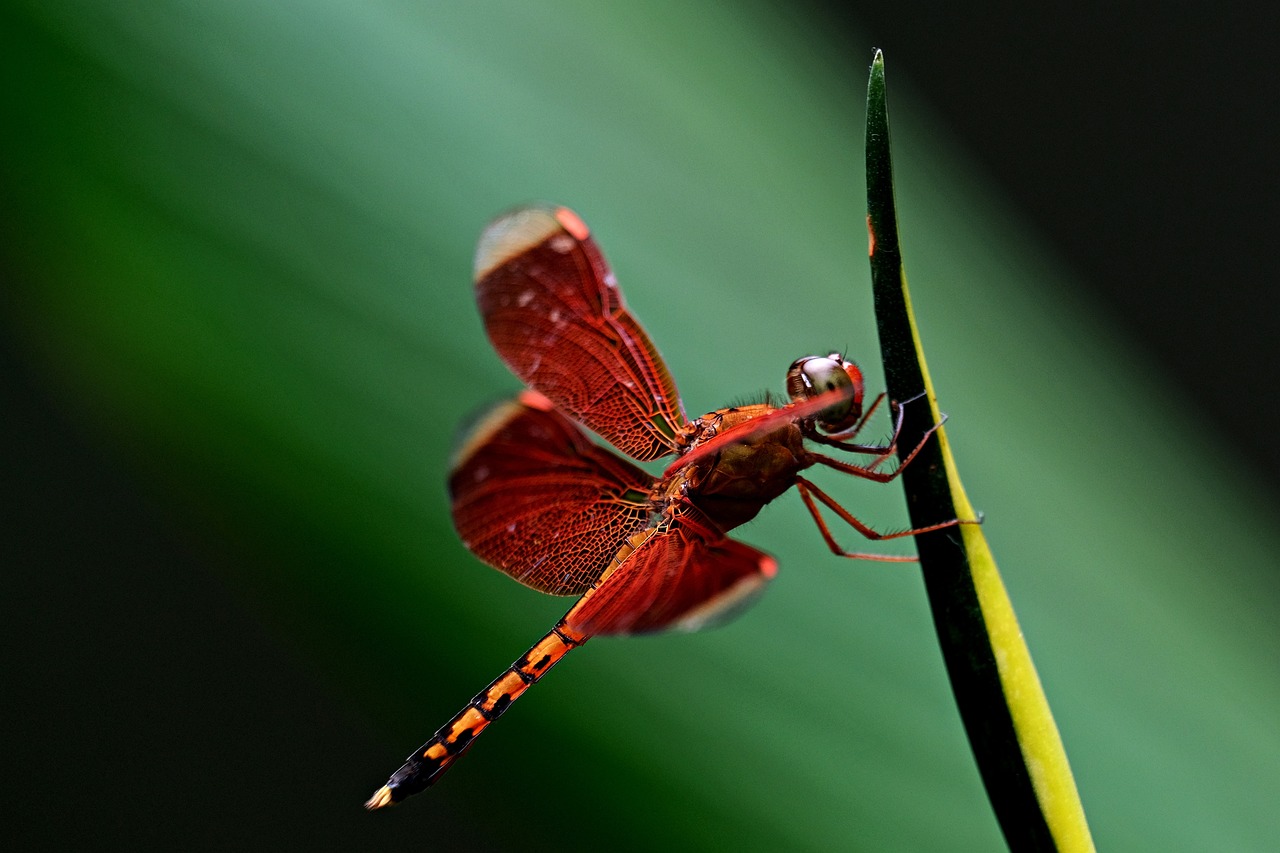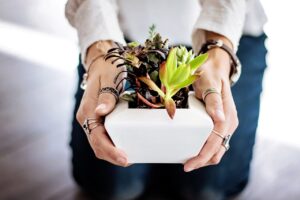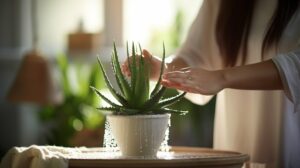What Plants Attract Dragonflies. Dragonflies are fascinating creatures that can add color and life to any garden. If you’re looking to attract these beautiful insects to your outdoor space, you’ll need to know which plants they love the most. Fortunately, there are several types of plants that dragonflies find irresistible. By incorporating these plants into your garden, you’re likely to see more dragonflies flying around in no time!
Key Takeaways:
- By including specific plants in your garden, you can attract dragonflies to your outdoor space.
- Dragonflies are natural predators that help control the population of other insects in your garden.
- Water plants, native plants, flowering plants, grasses, and open spaces are all great options for attracting dragonflies.
- Providing suitable perching spots, such as rocks and logs, can create an ideal environment for dragonflies.
- Dragonflies are attracted to sunny areas with open spaces, so ensure your garden has plenty of direct sunlight.
Understanding the Importance of Dragonflies in Your Garden
Dragonflies play a significant role in maintaining the ecological balance of your garden. As natural predators, dragonflies feed on other insects, such as mosquitoes and flies, that can be harmful to your plants and cause diseases.
By attracting dragonflies, you can reduce the need for chemical pesticides and create a healthier environment for both your plants and beneficial insects. Incorporating dragonfly-friendly plants in your garden can encourage these insects to take up residence and help control insect populations.
Dragonflies are also fascinating creatures that add a touch of beauty and vibrancy to your outdoor space. Watching them glide through the air and rest on plants and rocks can be a calming and meditative experience.
Water Plants for Dragonfly Habitat
Dragonflies require water sources for survival and reproduction, and incorporating water plants into your garden can help attract them more effectively. Consider adding aquatic plants such as water lilies, water hyacinth, and water lettuce to provide a suitable habitat for these insects.
| Plant Name | Plant Description |
|---|---|
| Water Lilies | These floating plants have round, waxy leaves and fragrant flowers that bloom during the summer months. They provide a resting spot and perching location for dragonflies. |
| Water Hyacinth | These plants have long, dangling roots that provide shelter for dragonfly larvae. They also have broad, glossy leaves that provide a good location for dragonflies to rest. |
| Water Lettuce | These plants have large, flat leaves that form a rosette shape. They make excellent hiding spots for dragonfly larvae and provide a basking spot for dragonflies. |
Adding water plants to your garden not only attracts dragonflies but also creates a beautiful and tranquil environment. Ensure that you provide a mix of floating and submerged plants, as dragonflies need both to complete their life cycle.
Creating a Pond
If you have enough space in your garden, consider creating a pond as it is an excellent way to attract dragonflies. Ensure that the pond is at least two feet deep and contains a variety of water plants. Place rocks and logs around the edges to create perching spots for dragonflies.
- Use a pond liner to create the pond shape.
- Add a water pump to ensure that the water is circulating and oxygenated.
- Include a variety of water plants such as water lilies, water hyacinth, and water lettuce.
- Place rocks and logs along the edges for dragonflies to perch on.
By incorporating water plants into your garden and creating a pond, you can attract dragonflies and provide a beautiful and ecologically balanced outdoor space.
Native Plants as Dragonfly Magnets
If you want to attract dragonflies to your garden, planting native plants can be an excellent option. These plants have evolved with these insects and provide them with the necessary food and shelter.
Some of the best plants to attract dragonflies include:
| Plant | Description |
|---|---|
| Milkweed | A flowering plant that is a host for monarch butterflies and attracts a variety of insects, including dragonflies. |
| Black-eyed Susan | A yellow-flowering plant that is easy to grow and attracts a variety of pollinators, including dragonflies. |
| Joe-Pye weed | A tall, late-season flowering plant that is a favorite of dragonflies and butterflies. |
| Cardinal flower | A bright red flowering plant that is particularly attractive to dragonflies. |
By incorporating these native plants into your garden, you can create a habitat that is attractive to dragonflies and supports their natural behavior.
Flowering Plants to Attract Dragonflies
If you want to attract dragonflies to your garden, consider planting flowering plants that offer nectar as a food source. Dragonflies are particularly attracted to vibrant colors and strong scents, which help them locate nectar sources. Planting these flowers can entice dragonflies to visit your garden and stay around.
Purple coneflower is a great option for attracting dragonflies. This plant produces beautiful purple flowers and blooms from late spring to early fall. Dragonflies are attracted to the bright color of the flower and the sweet nectar it produces.
Bee balm is another flowering plant that is highly attractive to dragonflies. This plant produces red, pink, and purple flowers that are known for their strong scent. The strong aroma helps dragonflies locate the plant and provides a rich source of nectar.
Butterfly bush is a fast-growing shrub that produces fragrant flowers in shades of purple, pink, and white. This plant is highly attractive to dragonflies due to its sweet scent and colorful blooms.
Goldenrod is a late-blooming plant that produces vibrant yellow flowers. This plant is a great option for attracting dragonflies in the late summer and fall, when other nectar sources have started to dry up.
Planting a variety of flowering plants in your garden can help attract a range of different dragonfly species. By providing a diverse range of nectar sources, you can create a dragonfly-friendly environment that will be highly attractive to these beautiful insects.
Grasses and Sedges for Dragonflies
Grasses and sedges can create an ideal habitat for dragonflies, as they provide shelter, perching spots, and places to lay eggs. Consider planting varieties such as switchgrass, big bluestem, and blue-eyed grass to attract dragonflies to your garden.
Switchgrass (Panicum virgatum) is an excellent choice as it provides both food and nesting sites for dragonflies. This grass produces small, inconspicuous flowers that attract a variety of insects, making it an ideal hunting ground for dragonflies. Big blue stem (Andropogon gerardii) and little blue stem (Schizachyrium scoparium) are also attractive to dragonflies and provide a good base structure for your garden.
| Plant Name | Description |
|---|---|
| Switchgrass | Produces small flowers that attract insects, provides nesting sites for dragonflies |
| Big bluestem | Attractive to dragonflies, provides base structure for garden |
| Blue-eyed grass | Produces small, blue flowers that are attractive to dragonflies, adds color to garden |
Blue-eyed grass (Sisyrinchium spp.) is another option to consider, as it produces small, blue flowers that are attractive to dragonflies and adds color to your garden. This grass-like plant grows in clumps and provides an excellent hiding place for insects, making it an attractive option for dragonfly habitat.
Planting a variety of grasses and sedges in your garden can provide a natural and inviting environment for dragonflies.
Incorporating Rocks and Logs
Dragonflies love to rest and perch on rocks and logs near water sources. If you have a pond or water feature in your garden, consider placing rocks around it to create additional perching spots for dragonflies. You can also include logs or stumps in your garden to provide more natural perching options.
These natural elements not only create a dragonfly-friendly environment, but they also add a rustic and natural look to your outdoor space. Remember to position the rocks and logs in areas that receive ample sunlight so that the dragonflies can bask in the warmth.
If you aren’t able to incorporate natural rocks and logs, there are also man-made options available, such as faux rocks and concrete logs. These alternatives can still provide a suitable perching spot for dragonflies, while also blending into the surrounding environment.
Providing Sunlight and Open Spaces
Dragonflies love warm, sunny areas with plenty of space for flight. When planning your dragonfly garden, ensure that there are areas of direct sunlight and avoid overcrowding plants. A well-lit and open garden will be more inviting to dragonflies and make them feel at home.
Consider incorporating a variety of dragonfly-friendly plants such as native grasses, flowering plants, and water plants. These will provide suitable habitats for dragonflies, allowing them to thrive in your garden.
Conclusion
Incorporating dragonfly-friendly plants into your garden can not only create a beautiful space but also provide many benefits. Dragonflies are natural predators that can help control the population of pesky insects like mosquitoes and flies. By understanding what plants attract dragonflies, you can create a habitat that supports these insects and promotes a healthy garden ecosystem.
Water plants such as water lilies and aquatic grasses are great choices for providing a suitable habitat for dragonflies. Native plants like milkweed and black-eyed Susan have evolved alongside dragonflies and offer necessary food and shelter. Flowering plants like bee balm and butterfly bush provide a food source for dragonflies while adding vibrant colors to your garden. Grasses and sedges also create an ideal habitat for these insects, providing shelter and perching spots.
Providing Natural Perching Spots
Dragonflies often rest and perch on rocks and logs near water sources. By incorporating these natural elements into your garden, you can provide additional perching spots for dragonflies. Place rocks near ponds or water features and include logs or stumps to create a dragonfly-friendly environment.
Creating an Open and Sunny Space
Dragonflies are attracted to sunny areas with open spaces, as they need warmth and ample room for flight. An overcrowded garden will not be as inviting to dragonflies, so ensure that your garden has areas of direct sunlight and enough open space.
By incorporating a variety of plants and suitable habitable areas for dragonflies, you can create a vibrant and ecologically balanced outdoor space. Not only will you enjoy the colorful presence of dragonflies, but you will also benefit from their natural pest control abilities.
FAQ
What plants attract dragonflies to your garden?
Native plants such as milkweed, black-eyed Susan, Joe-Pye weed, and cardinal flower are known to be attractive to dragonflies. Flowering plants like purple coneflower, bee balm, butterfly bush, and goldenrod also entice dragonflies with their nectar.
Why are dragonflies important for your garden?
Dragonflies are natural predators that feed on insects like mosquitoes and flies. By attracting dragonflies, you can naturally control the population of these pesky insects and reduce the need for chemical pesticides.
How can water plants attract dragonflies?
Dragonflies lay their eggs in or near water, so incorporating water plants like water lilies, water hyacinth, and water lettuce can create a suitable habitat for these insects.
What are some grasses and sedges that attract dragonflies?
Switchgrass, big bluestem, and blue-eyed grass are varieties of grasses and sedges that provide shelter, perching spots, and places for dragonflies to lay their eggs.
Why should I incorporate rocks and logs in my garden?
Dragonflies often rest and perch on rocks and logs near water sources. By including these natural elements, you can provide additional perching spots for dragonflies.
What kind of habitat do dragonflies prefer?
Dragonflies are attracted to sunny areas with open spaces. They need warmth and ample room for flight, so ensure that your garden has areas of direct sunlight and avoid overcrowding plants.





Pingback: Discover the Unique Plant Uses for Decoration in Your Home
Pingback: Discover the Wonders of Botanic Garden Plants Today!
Pingback: Discover What Plants Attract Butterflies in Your Garden - Botanic Plant Life
Pingback: Discover What Plants Keep Flies Away From Your Home
Pingback: Unlocking Gardening Secrets: What Plants Like Coffee Grounds
Pingback: Discover How Plants Use Water: Nature's Intricate Design